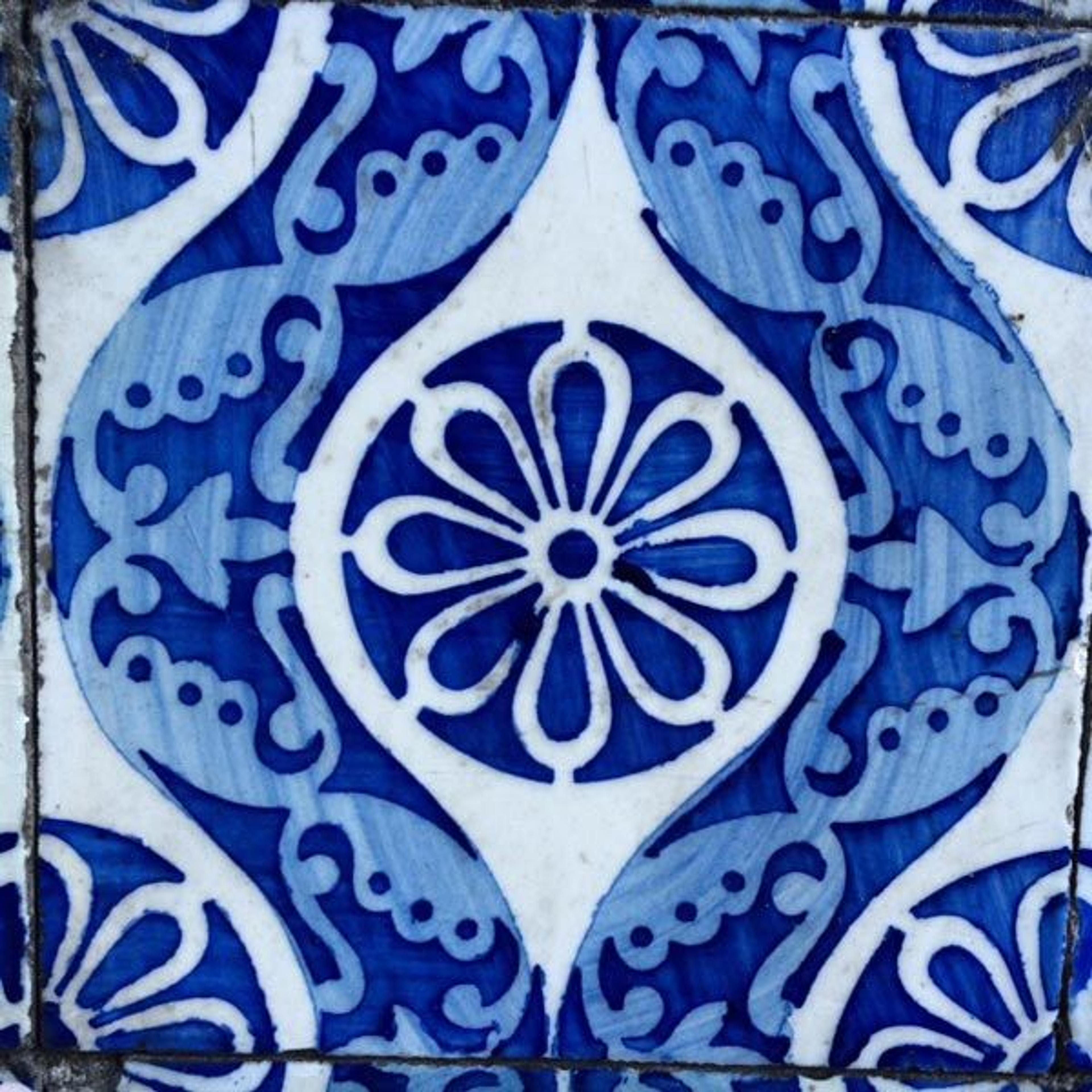Portuguese Azulejos and Quinta da Aveleda's Cellars
An azulejo seen in Porto, Portugal. Images courtesy of the author
«We began today with Met Curator Dita Amory's lecture on azulejos, Portuguese ceramic tiles. The word "azulejo" comes from the Arabic word "zellige," or "polished stone." Throughout Spain and Portugal, you can't help but marvel at these incredible decorative motifs, which were originally introduced by the Moors.»
Starting in the sixteenth century, Portugal began producing its own decorative tiles, which were not only beautiful but also helped with insulation. During the seventeenth century, churches began using them to depict religious scenes.
Large azulejo panels were also featured in the homes of wealthy families, displaying hunting scenes, battles, or fantastic images of Portuguese explorers. Blue-and-white tiles, influenced by the Dutch, also became popular, and by the eighteenth century, Portugal was the world's largest producer of decorative tiles.

A blue-and-white azulejo seen in Porto, Portugal
Following lunch on the ship, our trip continued in Penafiel, home of Quinta da Aveleda, where the local vinho verde (wine) is made. Lecturer Paddy Bowe led us on a tour of the enchanting gardens. After a walk through the estate's brandy cellars, the group enjoyed a delicious wine tasting paired with various fruit, cheeses, and chocolates.

The gardens of Quinta da Aveleda
Later that evening, we dined over candlelight at the Alpendurada Monastery, where a Benedictine Order of monks resided until 1834.
Brooke Bates
Brooke Bates is the development officer for Apollo Circle and travel program in the Development Department.